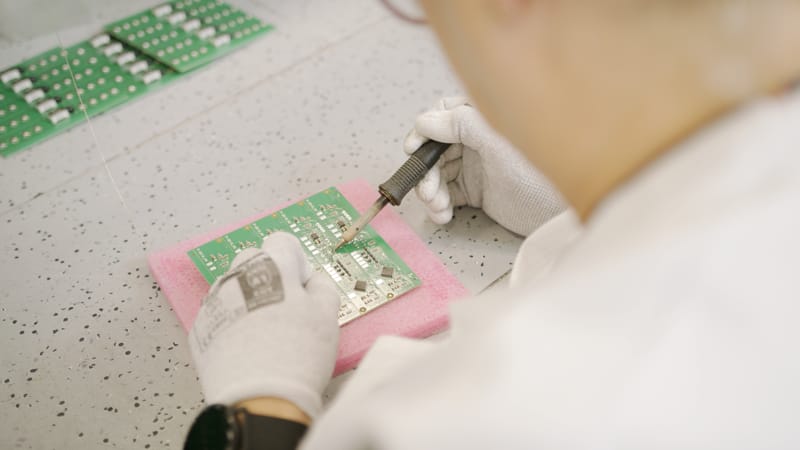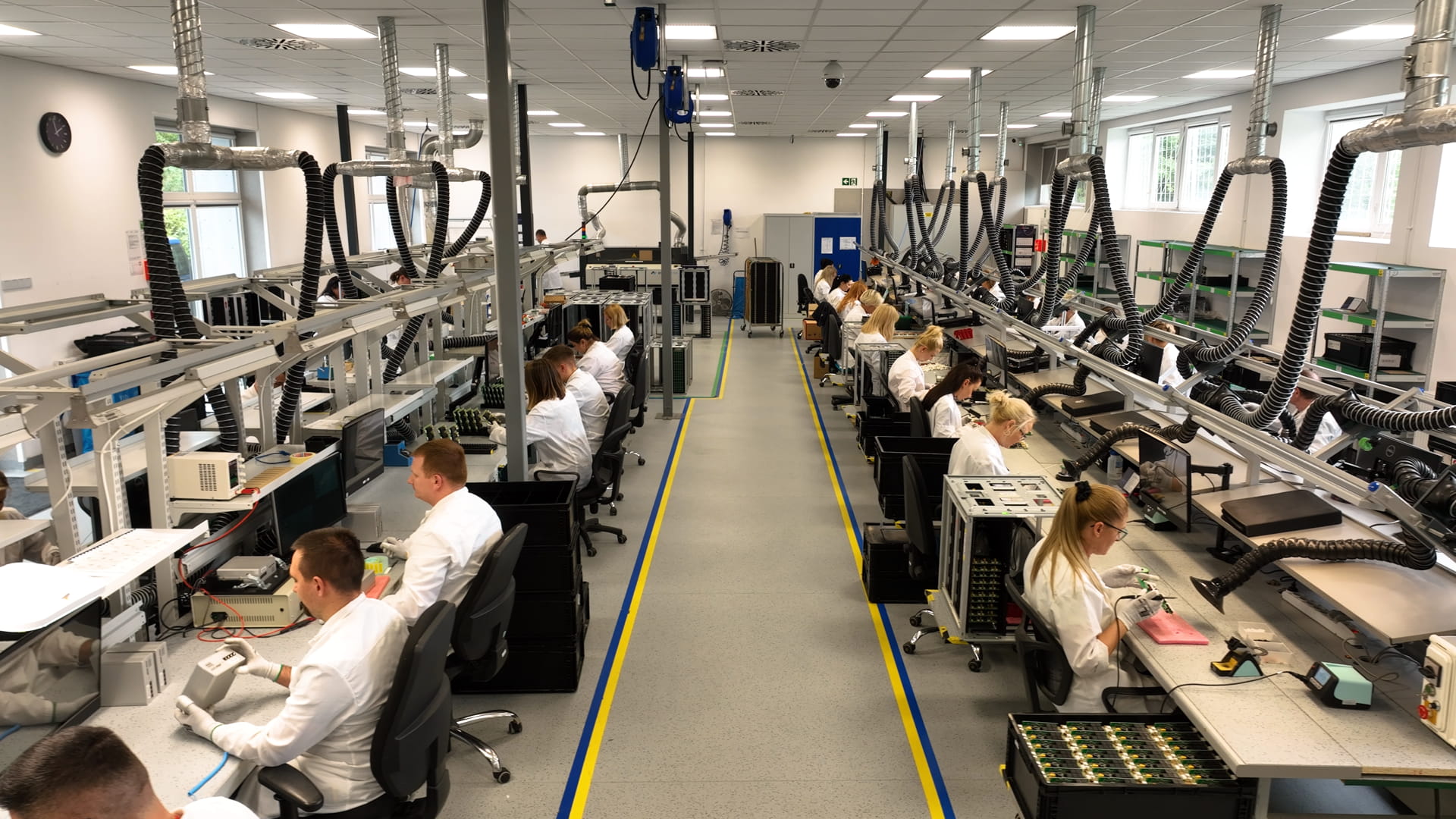THT (Through-Hole Technology) assembly is a method of assembling electronic components that consists of placing threaded elements on printed circuit boards (PCB).
What is THT assembly?
THT (Through-Hole Technology) assembly is a method of assembling electronic modules in which the leads of the components are threaded through holes in PCB boards and soldered to conductors on the opposite side of the board. THT assembly has been used since the 1960s and in some cases, it is still the prevailing method regardless of the development of more modern SMT (Surface Mount Technology) assembly method.
The use of THT services in through-hole technology
THT assembly method becomes especially useful if mechanical resistance or resistance to high temperatures is needed. THT can be used to produce, among others, audio amplifiers, power adapters, and industrial or military equipment. THT, also called manual assembly, is frequently used in prototyping or low-volume productions due to providing better efficiency and more cost-effectiveness than automatic SMT assembly.
Manual THT assembly step-by-step

THT assembly is widely used especially if mechanical or high-temperature resistance is needed.
Basic elements of THT assembly
Assembling threaded components (THT) consists of a few basic stages:
- Preparation of PCB board – printed circuit boards are drilled in to enable threading of electronic elements,
- Placing of components – electronic THT components are placed in the holes on the board,
- Securing the components – components are secured on the board using adhesive tape or another method to prevent them from falling out during the soldering process,
- THT soldering – leads of the elements are soldered to the conductors on the PCB board assuring long-lasting mechanical and electric connections,
- Quality control – particular steps of assembly are inspected to detect any mistakes like misplacing the components or cold solder.
Depending on the requirements of each project THT assembly can be conducted manually or automatically.
Automatic THT assembly – how does it work?
Automatic THT assembly is based on using machines for placing the threaded components on the board. This process is faster and more accurate than manual THT assembly but may be more expensive due to the cost of machines and the need to maintain them. Unmanned THT assembly is especially effective in the case of high-volume productions where time and precision are of key importance.
Advantages of automatic THT assembly include:
- Higher precision and repetitiveness
- Faster assembly process
- Smaller chances of human mistakes
Disadvantages of assembling THT components using the unmanned method:
- Higher investment costs and the need to maintain machines
- Assembly limitations due to extraordinary shapes of components
Manual THT assembly – when is it used?

Manual THT assembly is based on placing the threaded components on the PCB board by an operator who later solders the leads to the connectors. This process is used when the automatic assembly is uneconomic or when more flexibility is needed, e.g.: prototyping or assembling extraordinarily shaped components.
Advantages of manual THT assembly include:
- Lower investment costs
- More flexibility in assembling a variety of components
- The possibility to quickly implement changes in the project
Disadvantages of manual THT assembly:
- Slower assembly process
- Higher risk of human errors
- Smaller precision and repetitiveness
The choice between automatic and manual THT assembly depends on the requirements of each project, available resources, and production goals.
THT technology can still be considered popular. It can be used in a variety of sectors thanks to its reliability and resistance. Automatic THT assembly enables the effective and precise placing of components on PCB boards which significantly speeds up the process of electronics production. This is usually important in the context of high-volume productions of electronic modules and contract electronics manufacturing.
In the following parts of our cycle about THT assembly, we will continue the exploration of a variety of aspects of THT assembly and its importance in modern electronics.




